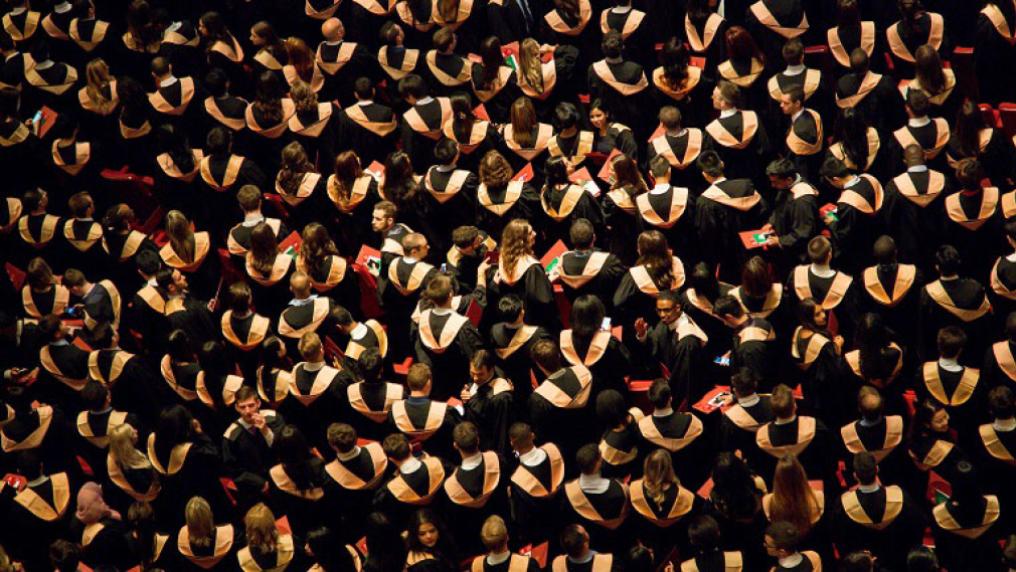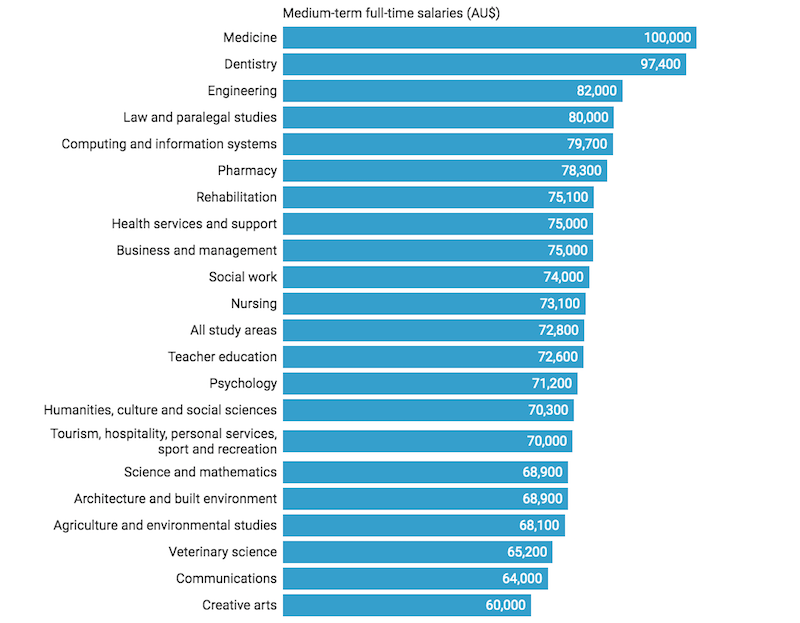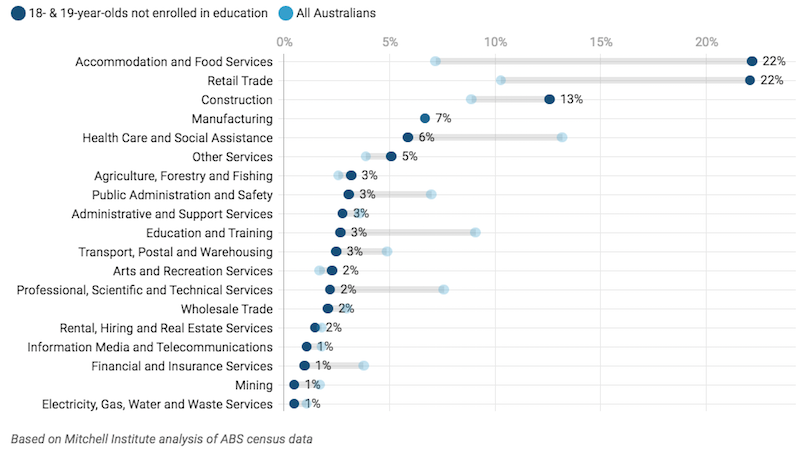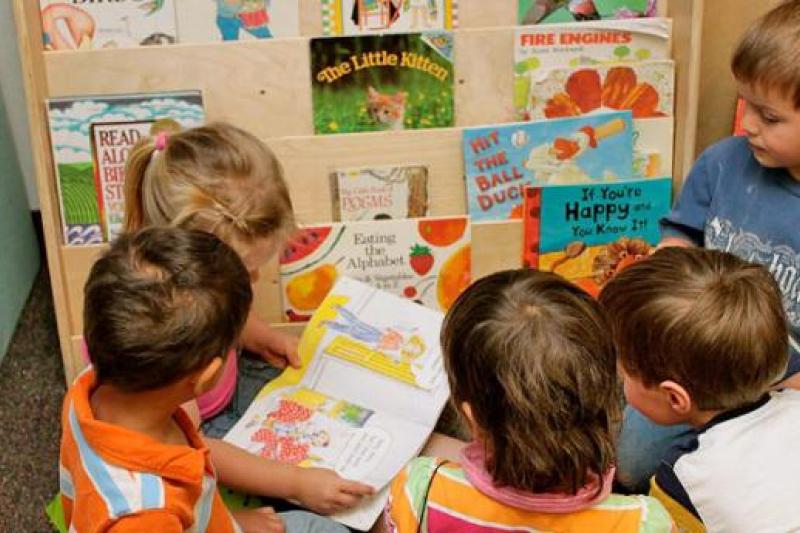Humanities graduates earn more than those who study science and maths

Education minister Dan Tehan has announced changes to funding rates for university courses as part of a plan to create “job ready graduates”.
He said:
Projections prepared before the COVID-19 pandemic showed that over the five years to 2024 it is expected that the overwhelming majority of new jobs will require tertiary qualifications – and almost half of all new jobs will go to someone with a bachelor or higher qualification.
Under the new plan, students doing teaching, nursing, clinical psychology, English and languages will pay 46% less for their degree from next year.
Students in agriculture and maths will pay 62% less, while those studying science, health, architecture, environmental science, IT, and engineering will be 20% better off.
But the student contribution for the humanities will go up by 113%, and the costs for law and commerce will jump by 28%.
The rationale is to encourage students to select courses with the best employment outcomes.
Tehan said health care is projected to make the largest contributions to employment growth, followed by science and technology, education and construction.
He said these industries are projected to provide 62% of total employment growth over the next five years.
Although there will be no change in course fees for medicine, dental, and veterinary science students.
With a forecasted rise in unemployment due to the COVID-19 pandemic, Tehan is expecting more young people to go to university, and others to return to re-skill.
National figures show about 93% of graduates who are available for work are employed three years after completing their bachelor degree.
While science, technology, engineering and maths (STEM) graduates are a focus of Tehan’s reforms, not all STEM graduates have above-average employment outcomes. After three years, the overall employment rate of engineering graduates is 95%, while science and maths graduates have a 90.1% rate of overall employment.
And science and maths graduates actually earn less than those with a degree in the humanities.
Which university students get jobs?
Undergraduates who study physiotherapy and occupational therapy (PDF) have the highest level of employment (98.8%) three years after finishing their bachelor degree, while creative arts graduates the lowest (89.3%).
Of the study areas where the government is proposing students contribute more, law graduates (95.8%) and business graduates (95.5%) are employed at rates above the average. Humanities graduates are employed at a rate of 91.1% (above science and maths).
The median salary for university graduates differs as well. After three years, medicine graduates earn the most (A$100,000) along with dentistry graduates (A$97,400).
Median full time salaries for university graduates

Graph text alternative: Graph showing the median full time salaries for university graduates from different areas of study about three years after finishing their course. The median salaries are: Medicine - $100,000; Dentistry - $97,400; Engineering - $82,000; Law and paralegal studies - $80,000; Computing and information systems - $79,700; Pharmacy - $78,300; Rehabilitation - $75,100; Health services and support - $75,000; Business and management - $75,000; Social work - $74,000; Nursing - $73,100; All study areas - $72,800; Teacher education - $72,600; Psychology - $71,200; Humanities, culture and social sciences - $70,300; Tourism, hospitality, personal services, sport and recreation - $70,000; Science and mathematics - $68,900; Architecture and built environment - $68,900; Agriculture and environmental studies - $68,100; Veterinary science - $65,200; Communications - $64,000; Creative arts - $60,000.
Source: QILT | Get the data | Created with Datawrapper
As the graph above shows, humanities and social science graduates (A$70,300) earn more than maths and science graduates (A$68,900).
Will reforms help the coronavirus class of 2020?
It is unclear whether these reforms will help school leavers facing an uncertain future.
During a recession many people look to study while the employment market remains weak. In his speech, Tehan said:
We know that people turn to education during economic downturns and we also know the Costello Baby Boom generation will begin to finish school from 2023.
In 2017 the Australian government effectively put a cap on university places, after five years of “demand driven” funding (where government essentially funded the amount of places students were enrolled in).
In practice, this means there are now limits on the number of government subsidised places at universities.
Because of demographics and previous growth in enrolments, the cap was not expected to restrict the number of people going to university until 2023.
But the COVID-19 pandemic means these assumptions may no longer apply.
Normally school leavers follow a number of pathways into the workforce (including going straight to work, or studying a university or vocational education and training course first). Most young people take the university pathway.
Youth pathways into the workforce

Graph text alternative: Graph depicting the number of young people in study, unemployed and in the workforce from ages 15 to 24. It shows the distribution of young people in employment increasing with age between 15 and 24, with concomitant reductions in education and unemployment. The majority of 18 to 20 year olds are in some kind of tertiary education. By 22, the majority are employed.
Source: LSAY | Get the data | Created with Datawrapper
However, these school leavers don’t start their courses at the same time.Around 20-25% of school leavers who go to university before working take a gap year. Travel restrictions and a weaker employment market may mean this year’s school leavers will bring forward their study plans.
There may also be more school leavers who choose to study at university instead of entering the workforce directly after school. For instance, 44% of 18 and 19 year olds who are not studying work in retail, accommodation and food services, and trade.
These industries have suffered large job losses because of the coronavirus pandemic.
Employment by industry

Graph text alternative: Graph showing the percentage of 18- and 19-year-olds who are not studying working in a range of industries, as compared to all Australians. The data shows that 18- and 19-year-olds are more likely to be working in industries hit the hardest by COVID-19, including accommodation and food services (22%), retail trade (22%) and construction (13%).
Source: ABS TableBuilder | Get the data | Created with Datawrapper
A reduction in new apprenticeships and traineeships (PDF, 413.78 KB), fewer jobs and higher youth unemployment mean school leavers may look to enrol in education and training.
Before COVID-19 hit, the number of year 12 students was only projected to go up by around 1-2% in the next few years – meaning minimal demand for extra university places. However, due to COVID-19, there already has been a reported doubling of year 12 students in NSW applying for a university course compared to the same time last year.
The government believes 39,000 extra university places will be created by 2023 because of these changes. But this number is not specifically designed to meet a projected increase in demand because of the coronavirus. Therefore, it is unclear (without the government lifting the cap) whether there will be enough funded university places for school leavers whose plans have been displaced by the pandemic.
This article is republished from The Conversation under a Creative Commons license. Read the original article.
![]()
Fee cuts for nursing and teaching but big hikes for law and humanities in package expanding university places
The Conversation, 19 June 2020
Demand-driven funding for universities is frozen. What does this mean and should the policy be restored?
The Conversation, 2 May 2019
Most young people who do VET after school are in full-time work by the age of 25
The Conversation, 15 May 2020



